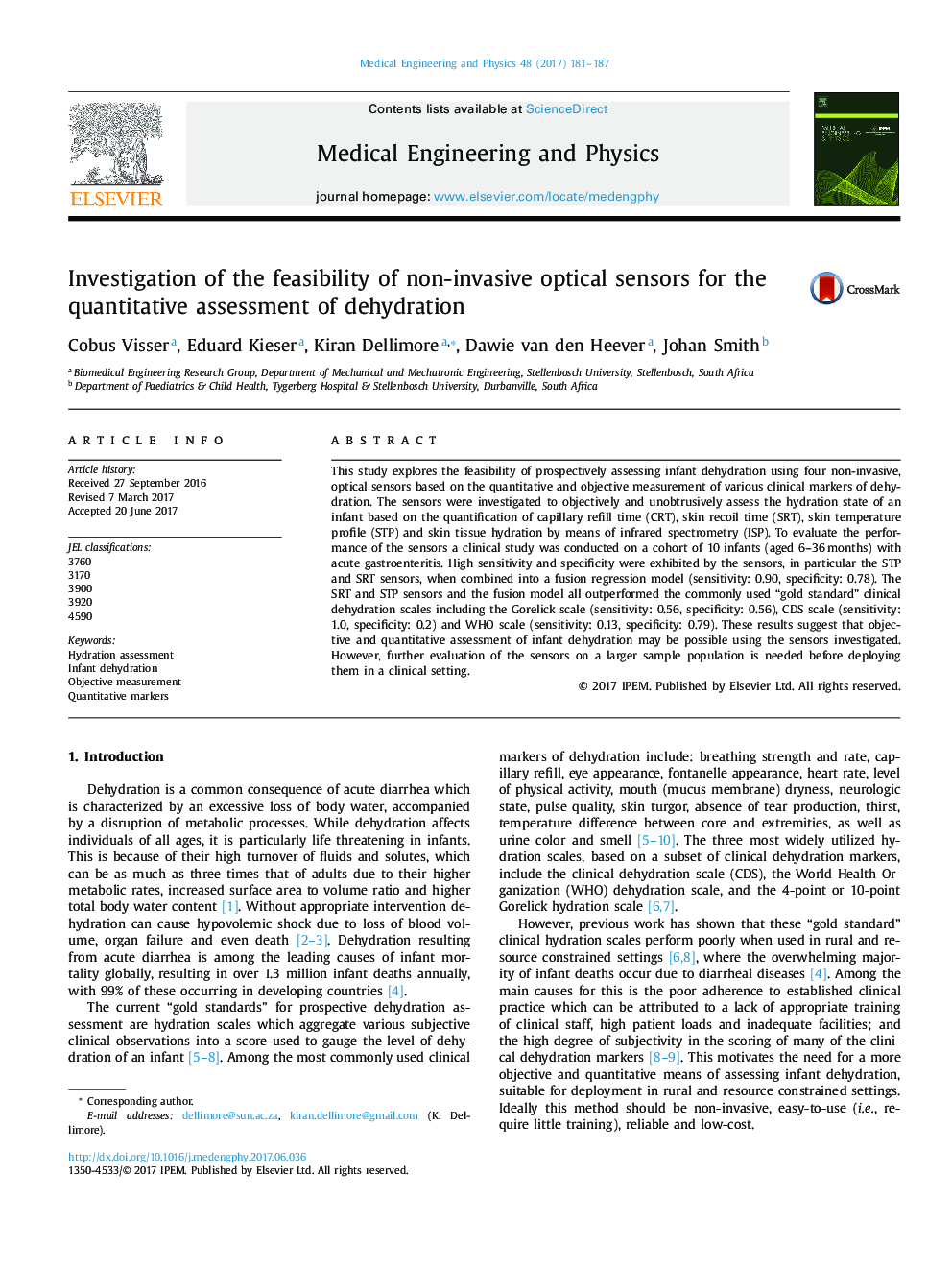| Article ID | Journal | Published Year | Pages | File Type |
|---|---|---|---|---|
| 5032606 | Medical Engineering & Physics | 2017 | 7 Pages |
â¢The feasibility of assessing infant dehydration through optical means is proposed.â¢Our results show higher specificity and sensitivity than current hydration scales.â¢Our results suggest quantitative assessment of infant dehydration may be feasible.
This study explores the feasibility of prospectively assessing infant dehydration using four non-invasive, optical sensors based on the quantitative and objective measurement of various clinical markers of dehydration. The sensors were investigated to objectively and unobtrusively assess the hydration state of an infant based on the quantification of capillary refill time (CRT), skin recoil time (SRT), skin temperature profile (STP) and skin tissue hydration by means of infrared spectrometry (ISP). To evaluate the performance of the sensors a clinical study was conducted on a cohort of 10 infants (aged 6-36â¯months) with acute gastroenteritis. High sensitivity and specificity were exhibited by the sensors, in particular the STP and SRT sensors, when combined into a fusion regression model (sensitivity: 0.90, specificity: 0.78). The SRT and STP sensors and the fusion model all outperformed the commonly used “gold standard” clinical dehydration scales including the Gorelick scale (sensitivity: 0.56, specificity: 0.56), CDS scale (sensitivity: 1.0, specificity: 0.2) and WHO scale (sensitivity: 0.13, specificity: 0.79). These results suggest that objective and quantitative assessment of infant dehydration may be possible using the sensors investigated. However, further evaluation of the sensors on a larger sample population is needed before deploying them in a clinical setting.
